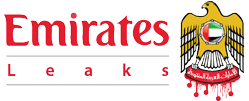The United Arab Emirates, through its criminal war on Yemen, which has been going on for more than four years, is trying to impose the scenario of dividing the country to serve its ambitions with resources and capabilities, especially in the south.
The UAE, the official player in southern Yemen and the exclusive sponsor of the Southern Transitional Council’s militia, is keen to invest local conflicts in Yemen for its benefit.
This is being done by establishing close ties with local allies that implement the UAE agendas, and then their aspiration in southern Yemen and the aspiration of their southern agents is an appropriate entry point to impose the scenario of dividing Yemen.
The Yemeni unity has long been subject to the political blackmail, and the extremism alone has been determined to evaluate it negatively or positively. As the unity of Yemenis, as well as the overlap of their life interests, are psychological obstacles to the forces of compromise, the restoration of the superficial borders under the current war seems more favorable than at any other time.
Almost three decades after the unification of Yemen, it can be said here that as far as the political follies of the former president, Ali Abdullah Saleh, as president, and then an ally of the Houthi group in the march on southern Yemen, have settled the point of no return for those eager to crush Yemen, Regional and international tendencies to manage countries of war and conflict through fragmentation of their geography.
In such circumstances, local Yemeni agents, and the regional states that are involved in Yemen, especially the UAE, seem to have the final say in the survival of any political form of the unity of the Yemeni geography or its removal.
Throughout the unified geography of Yemen, the current war by the Saudi-UAE alliance has produced a fragmented political and social reality that has been entrenched by the Yemeni war forces, both legitimate and militaristic, and that has led to a blow to national identity.
The absence of comprehensive national projects was the other side of the cost of war for the future of Yemenis. While the initiatives of the Yemeni parties and forces in the north and south of Yemen were limited to ensuring the military resolution of the party they represent and adopting the defense of their regional allies, the various militias, both northern and southern, tried to impose their tactical projects on the Yemenis by force, Marked the emergence of multiple national agendas in the Yemeni arena, so that it is difficult to enumerate them.
As a result, the federal project of Yemen seems imaginary and impossible to achieve. There are a number of local and regional players who are influential in the Yemeni arena and whose projects are compatible with the fragmentation of Yemen.
In this context, the Southern Transitional Council, supported by the UAE, the second country in the Arab alliance, adopts a regional fragmentation project that requires the revival of the southern Yemen state, while removing it from its historical context.
Thus, these contradictory and competing projects, with their diverse political actors and their legitimacy on the ground, constitute an end to the traditional Yemeni political unity, although their ways of undermining unified Yemen have varied.
Since the establishment of the Yemeni unity three decades ago, Saudi Arabia, the leader of the Arab alliance, has sought in every way to divide Yemen. The presence of a unified, strong and united Yemen is a concern for the Saudi regime. The entry of Saudi Arabia into the Yemeni arena under the pretext of defending the legitimate authority gave it preference over other regional powers to determine the scenario it prefers for Yemen in the future, whether the return of the border to the pre-1990 and then two states. In this case, Saudi Arabia, like its ally in the United Arab Emirates, is sufficient to support the agendas of local agents or to overlook their tendency to achieve the goal of imposing a partitioned scenario on Yemen and its citizens.



